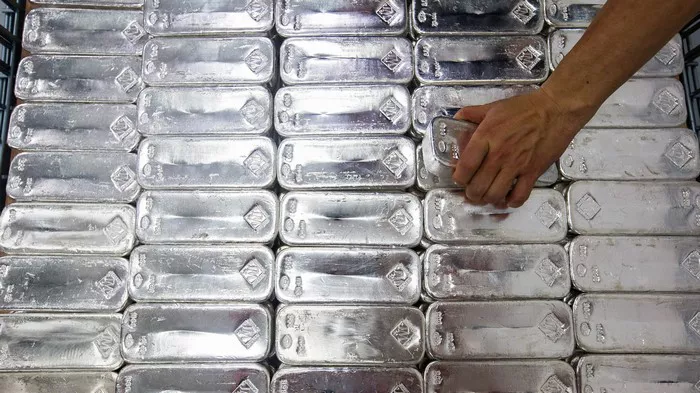Silver, a precious metal with a rich history spanning millennia, has long captivated human civilization with its luster, versatility, and intrinsic value. From adornments to currency, from industry to investment, silver plays a multifaceted role in our modern world. However, as with any finite resource, questions arise about its availability, prompting us to delve into the intricate web of supply, demand, and reserves to ascertain how much silver is left in the world.
Understanding Silver Reserves
Silver, unlike some other metals, is rarely consumed and is predominantly recycled or stockpiled. This characteristic ensures that the majority of the silver ever mined still exists in some form today. However, the accessibility and economic viability of extracting this silver vary considerably.
Global silver reserves are estimates of economically recoverable silver that can be feasibly extracted with existing technology and at prevailing market prices. These reserves are dynamic, influenced by factors such as exploration efforts, technological advancements, market demand, and geopolitical developments.
Assessing Current Silver Reserves
As of the latest available data, global silver reserves stand at approximately 570,000 metric tons. The largest reserves are concentrated in countries with significant mining operations, including Peru, Mexico, China, and Russia. These nations boast extensive mineral resources and well-established mining industries, enabling them to maintain substantial silver reserves.
In addition to primary silver reserves, there are significant secondary reserves derived from recycled silver. The recycling industry plays a crucial role in supplementing primary production and mitigating supply constraints. With advancements in recycling technology and increasing awareness of the importance of resource conservation, the contribution of recycled silver to global reserves is expected to grow in the coming years.
Challenges and Constraints
Despite the apparent abundance of silver reserves, several challenges and constraints affect the availability and accessibility of this precious metal. One significant factor is the geological complexity of silver deposits. Unlike gold, which often occurs in concentrated veins, silver is commonly found in conjunction with other metals, making extraction more challenging and costly.
Furthermore, environmental and regulatory considerations impose additional constraints on silver mining operations. Stricter environmental standards, community opposition, and permitting delays can hinder exploration and development activities, affecting the replenishment of reserves.
Economic factors also play a pivotal role in determining the viability of silver mining projects. Fluctuations in silver prices, production costs, and investment dynamics influence companies’ willingness to explore and develop new mines. In periods of low silver prices, exploration and development activities may be curtailed, leading to a potential decline in reserve replenishment.
Technological Innovations and Exploration Efforts
To address the challenges associated with silver mining, ongoing technological innovations and exploration efforts are essential. Advancements in geological mapping, remote sensing, and data analytics enable more accurate identification of silver deposits and optimization of extraction processes. Additionally, sustainable mining practices and the adoption of renewable energy sources contribute to reducing the environmental footprint of silver mining operations.
Exploration efforts are also critical for identifying new silver deposits and expanding existing reserves. While traditional mining regions remain significant contributors to global silver production, emerging exploration frontiers, such as parts of Africa and South America, offer untapped potential for discovering new deposits. However, exploration activities entail inherent risks and uncertainties, requiring substantial investment and expertise.
Demand-Supply Dynamics
The demand for silver is driven by a diverse array of end-uses, including industrial applications, jewelry, silverware, and investment. The industrial sector accounts for the largest share of silver demand, particularly in electronics, photovoltaics, and healthcare. As technological advancements and sustainability initiatives drive demand for silver in emerging industries such as renewable energy and electric vehicles, the consumption of silver is expected to increase steadily.
On the supply side, primary silver production is supplemented by recycled silver and silver by-products from base metal mining. However, the growth in primary silver production has been relatively modest in recent years, constrained by factors such as declining ore grades, operational challenges, and investment constraints. As a result, the gap between supply and demand has narrowed, leading to tighter market conditions and upward pressure on prices.
Future Outlook
The future of silver reserves hinges on a complex interplay of geological, technological, economic, and environmental factors. While existing reserves provide a solid foundation for meeting current demand, continued exploration and investment are necessary to ensure a sustainable supply of silver for future generations.
Technological innovations hold the key to unlocking new sources of silver and enhancing the efficiency of extraction processes. Sustainable mining practices and responsible stewardship of natural resources are imperative to minimize the environmental impact of silver mining operations.
Moreover, fostering collaboration among industry stakeholders, governments, and communities is essential for addressing regulatory challenges, promoting transparency, and fostering responsible mining practices.
Conclusion
In conclusion, while the precise quantity of silver reserves may fluctuate in response to various factors, the enduring allure and intrinsic value of silver ensure its continued relevance in our evolving world. By embracing innovation, sustainability, and collaboration, we can safeguard the legacy of silver for generations to come.

